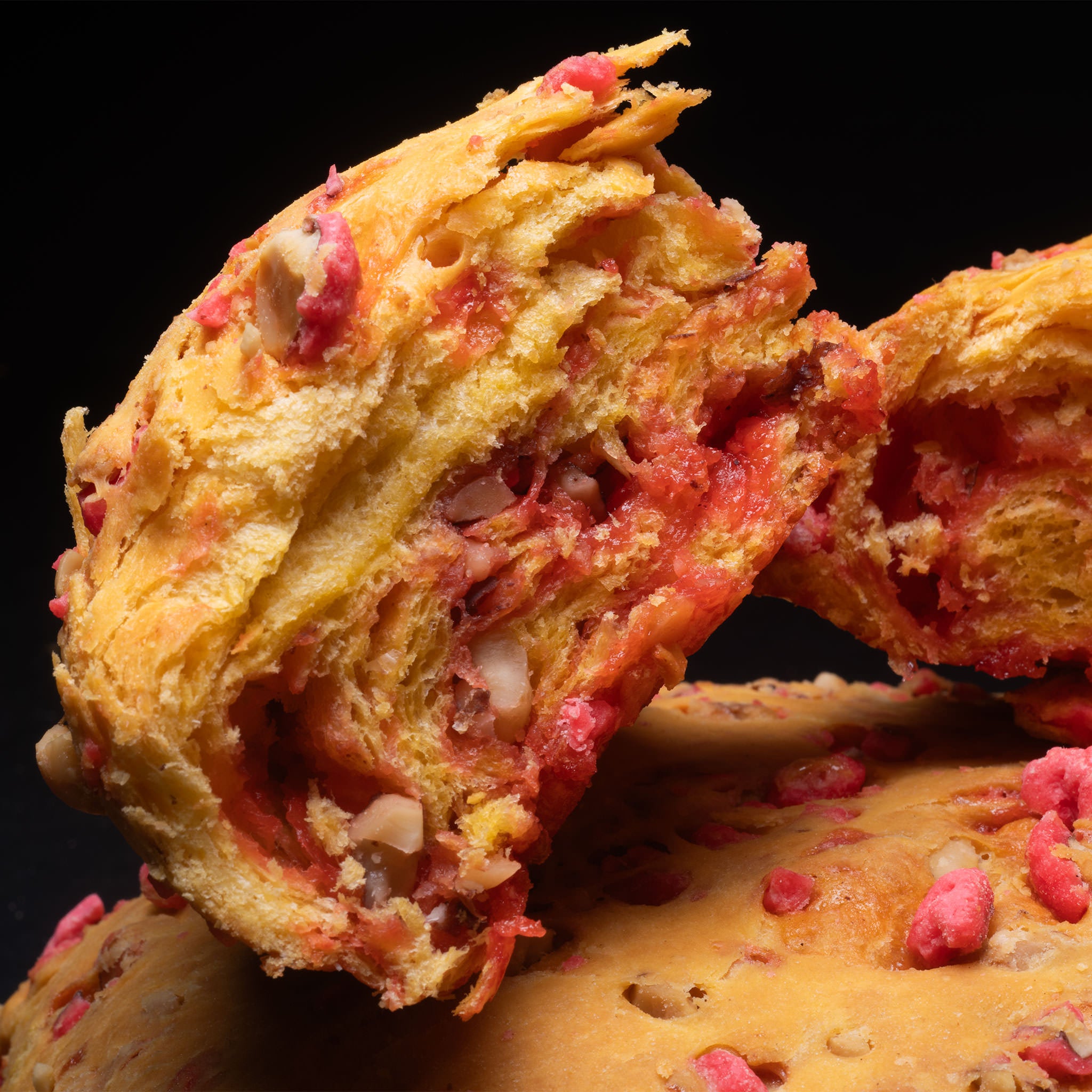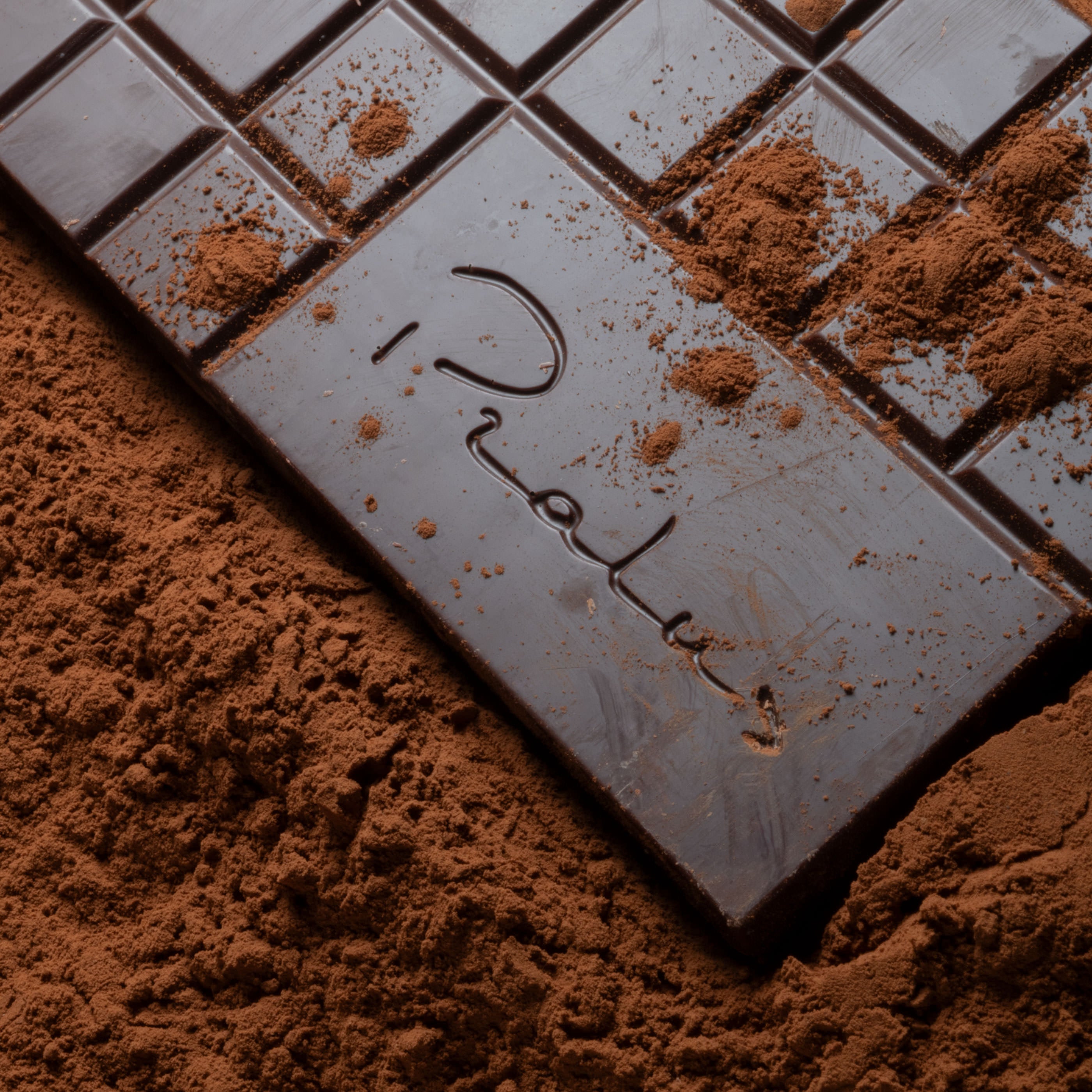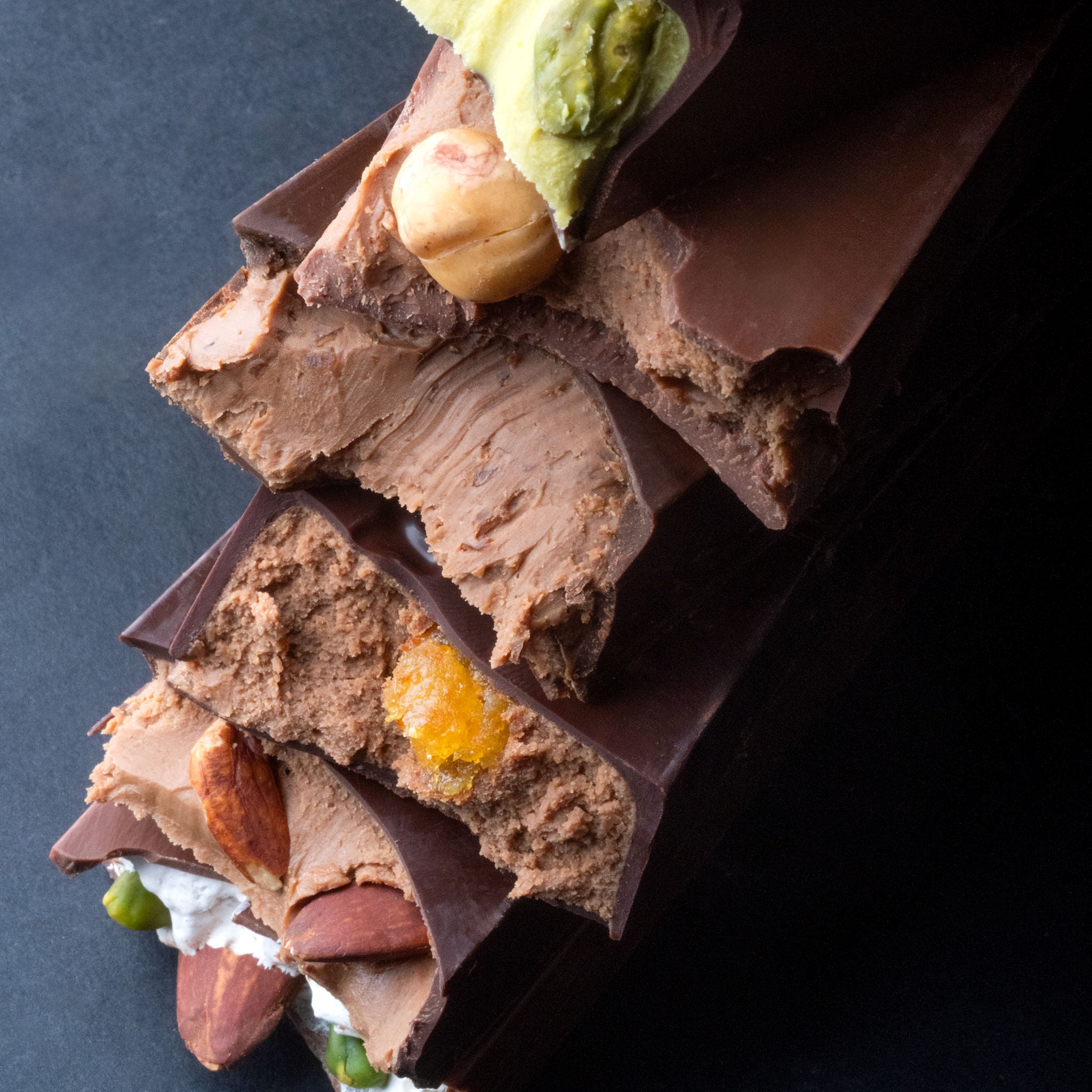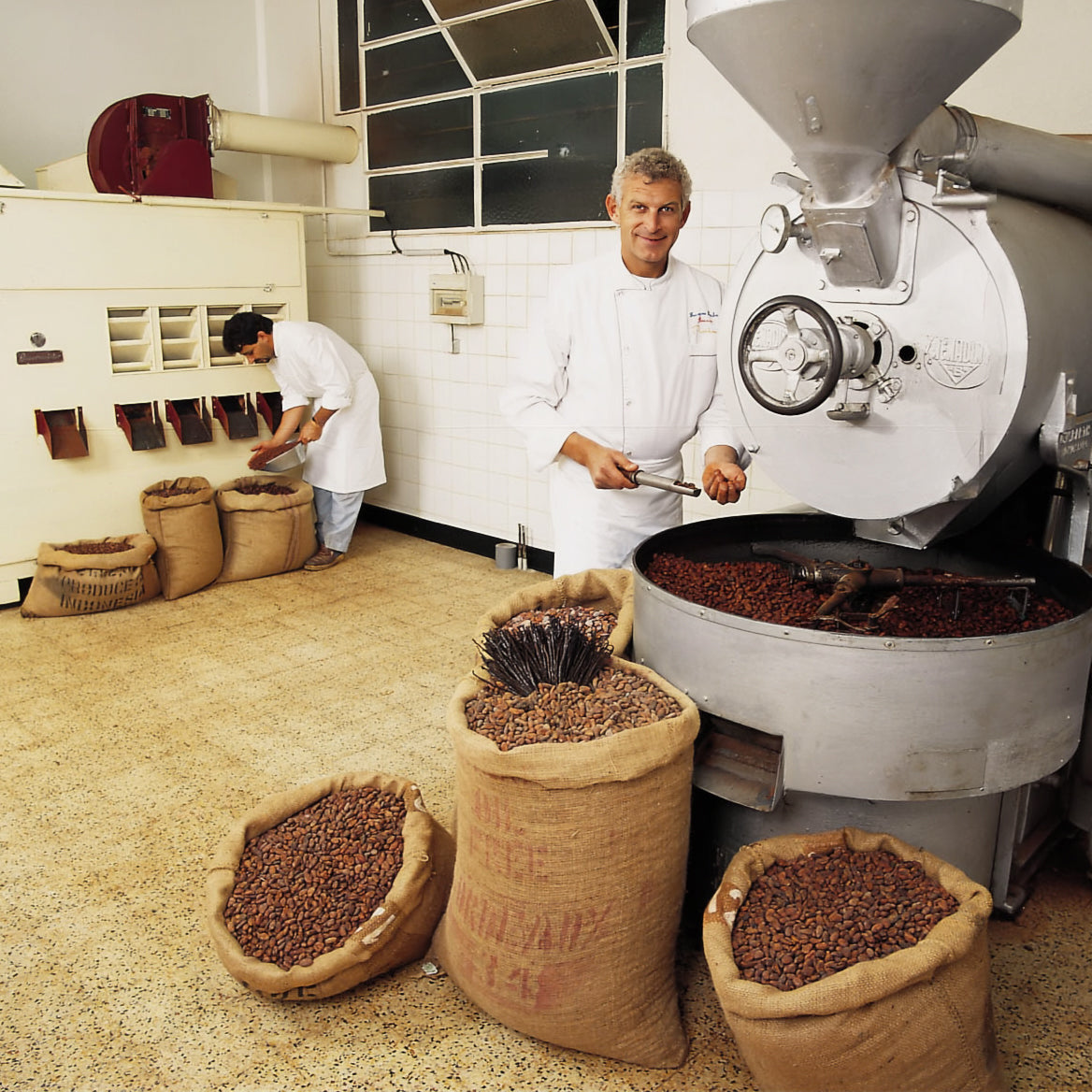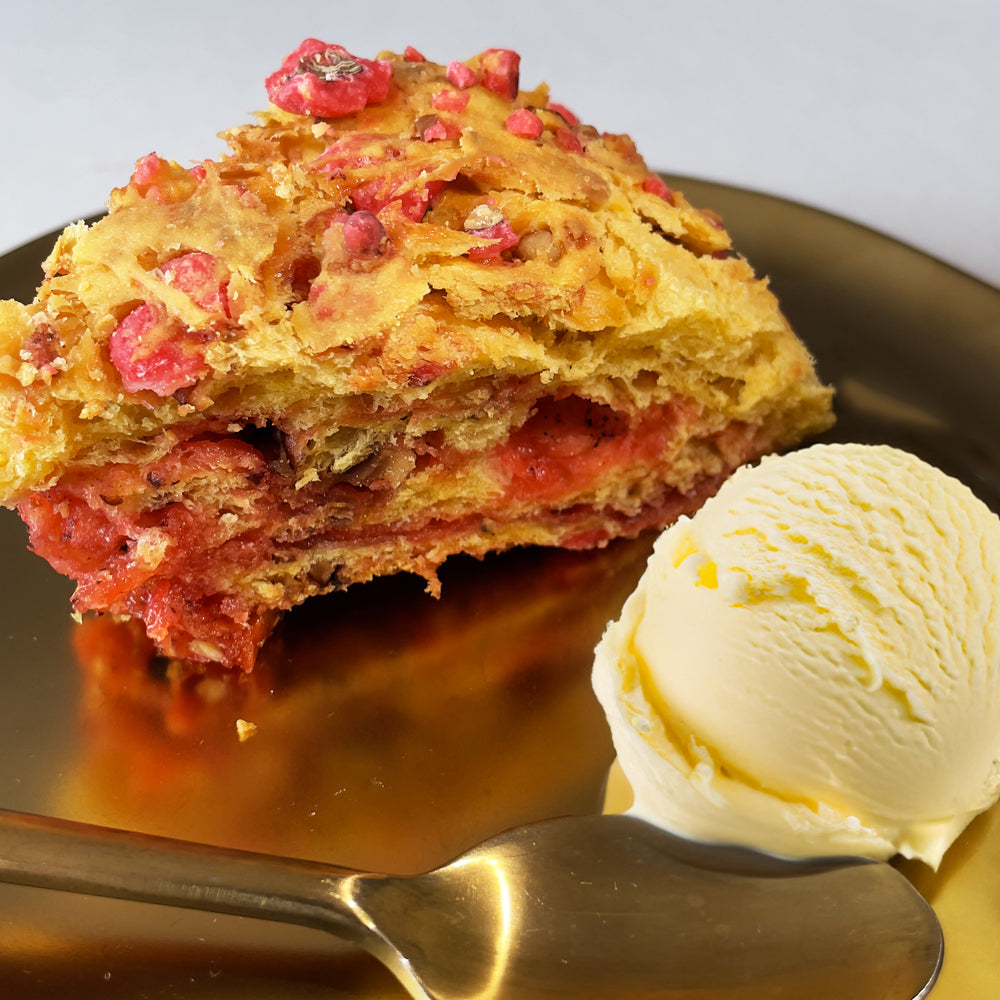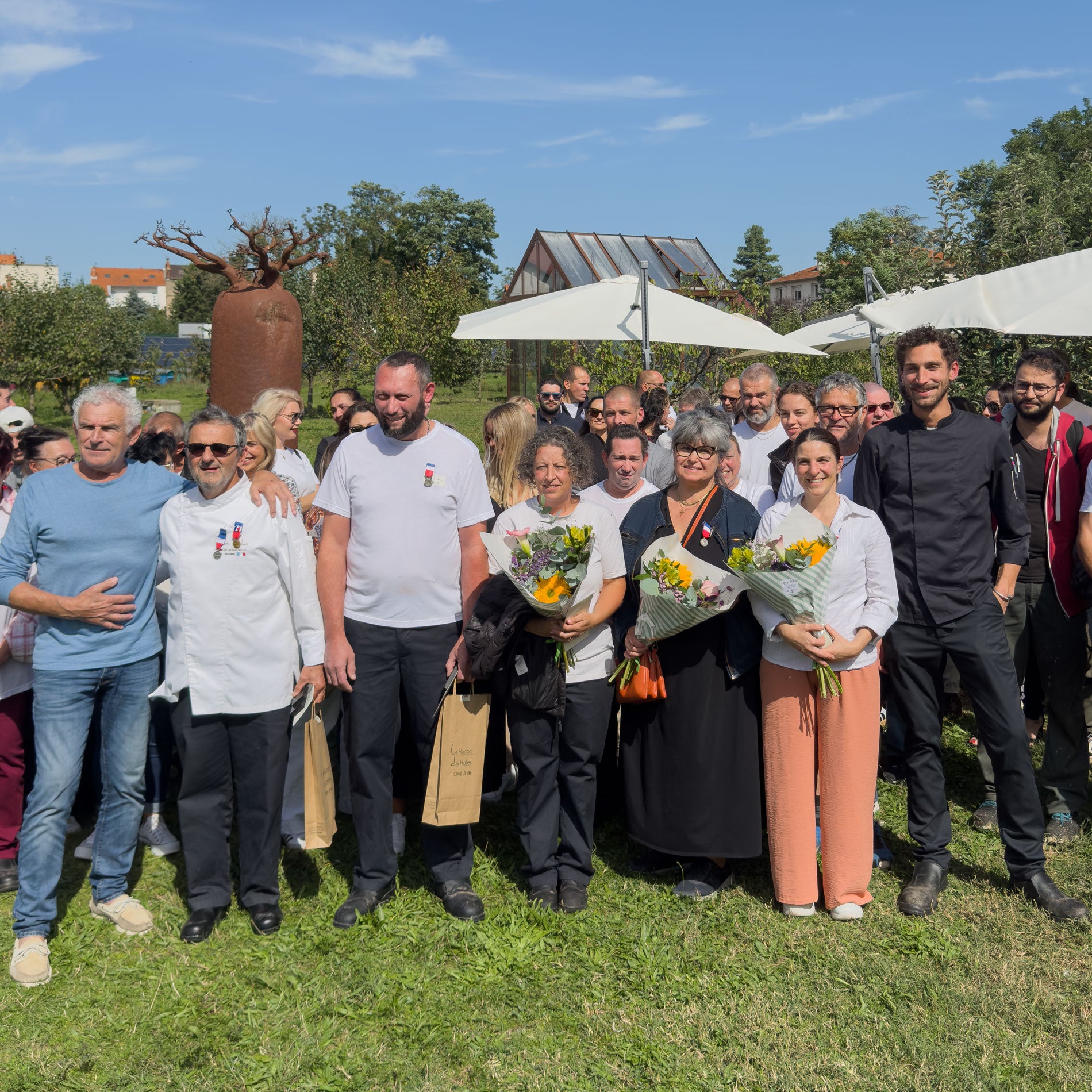If the name Pralus is inseparable from Praluline, chocolate is also one of the specialties developed in the 80s by François Pralus. His bean to bar chocolate has propelled the reputation of the Pralus house well beyond the city of Roanne where it is made.
By taking over the family business, François Pralus developed the production of chocolate from cocoa beans in 1990. An adventure that began in a converted cellar next to the pastry laboratory to install the first small machines, under the shop in downtown Roanne. The first conclusive tests and the first recipes validated, François Pralus launched in 1992 a set of bars that he then called “ purs crus” , that is to say made from a single origin of bean. A term that refers to great wines. He is the first artisan chocolatier to produce chocolate without mixing the origins of beans as was traditionally done and as he had learned.
Bean to bar and homemade
François Pralus travels the world to choose his cocoa beans: in Central America, South America, Indonesia… He is nicknamed the Cocoa Adventurer. He travels to the plantations to choose the raw material with which he then creates chocolate in Roanne for his bars, his chocolate candies and turbinés, but also for pastries. Fortissima, his first recipe (80% cocoa from Ghana, Java and Ecuador) and Djakarta (75% cocoa from Ghana and Indonesia) are completed by around fifteen origins offered in bars. François Pralus is then one of the rare French chocolatiers making all his chocolate from cocoa beans. Today we speak of bean-to-bar and this practice has developed well . “I do everything myself, from choosing the beans to conching ,” explains the master chocolatier, “rather than sourcing from specialist suppliers.” The production of chocolate candies, ganaches and pralines is of course part of the home-made tradition anchored in the DNA of Maison Pralus.
Recognized know-how and references
Quickly recognized by his peers and prestigious chefs (cooks, pastry chefs and chocolatiers) who work with his chocolate, François Pralus has garnered awards: Academy Chocolate Awards, Gault-Millau's Best Chocolatiers in Paris ranking, 3* Guild of Fine Food, Essential for the Chocolate Crunchers' bar, No. 1 in the ranking of chocolatiers in the Capital magazine's food champions ranking...
Pralus Pastry and Chocolate
At Pralus, the chocolate produced at the factory is the first ingredient used to make confectionery and of course signature pastries, such as the Paris-Dakar. This dessert created for a reception at the Senegalese embassy combines the crunchiness of a chocolate puff pastry with the creaminess of a light Fortissima ganache. A nod to the Tropézienne, the Pralusienne au chocolat is made up of a brioche with chocolate chips filled with a chocolate mousseline cream. Also very chocolatey, the classic Marquise au chocolat, its chocolate sponge cake and its light chocolate cream made with Fortissima (80%). Recently, Hugo and his team of pastry chefs added a chocolate Saint-Honoré to the menu: on a caramelized chocolate puff pastry, a light chocolate pastry cream, chocolate choux buns, a chocolate cream, a brownie and a whipped chocolate ganache. Embarking on the lands of the Pralus plantation, the Madagascar tart combines the flavors of chocolate, vanilla and Madagascar pepper.
Hazelnut and chocolate go well together and the Piedmontese pays tribute to them: hazelnut biscuit, praline buttercream and dark chocolate ganache in gourmet tarts! Just like the traditional Succès which hides under its 75% dark chocolate coating a hazelnut biscuit and a 55% dark chocolate ganache.
Chocolate words
- Tree : The cocoa tree is a long-leaved tree that reaches a height of about 5 meters. It grows in the shelter of large trees and bears pods and flowers all year round. A tree can bear 5000 flowers, on its trunk and branches.
- Bean : The cocoa bean is contained in the pod, which contains a good fifty of them gathered in a sort of cluster. The beans are covered in mucilage, a thick white membrane similar to lychee flesh.
- Origins: the variety of beans, the country, the climate, the soil and the know-how of the planters influence the quality of the beans and the flavors they will develop. The origin of the beans from which the chocolate is made therefore has a crucial importance on the flavors highlighted by the master chocolatier. Indeed, the terroir as well as the type of beans determine the flavor of the chocolate.
- Fermentation: The beans are fermented on the plantation once they have been shelled. The beans and their mucilage ferment for a few days. This step is important to reveal the taste of the cocoa.
- Drying: Once fermentation is complete, the beans are left to dry in the sun, and in some countries in the heat of wood fires.
- Masses: cocoa can be imported in masses, that is to say in cocoa paste. The masses take up much less space than the beans in transport and those who use them do not need to go through roasting or conching. This is not the case at Pralus which works directly with the bean.
- Roasting is a crucial step. The degree and time of roasting vary according to the origin of the beans, the type of cocoa and the know-how of the master chocolatier. Roasting causes the acids to evaporate and develops the aromas. The beans are then cooled slowly before being crushed in the tarare cocoa breaker. Cocoa nibs are obtained.
- Conche: conches are machines used to refine cocoa to obtain chocolate. The nibs, with added sugar and cocoa butter, turn for a long time in this large vat to obtain a cocoa fineness of the order of a few microns.
- Tabling: this term covers the stages of tempering cocoa to mold it into tablets.
- Couverture : couverture chocolate is used to coat candies. It is also called coating. This chocolate generally contains more cocoa butter. At Pralus, we generally use a 70% cocoa couverture.
- Couvreurier: This is how we describe a master chocolatier who produces chocolate for chocolatiers and pastry chefs. The latter melt the raw material provided by the couverture for their own chocolate creations, but also to mold bars.
